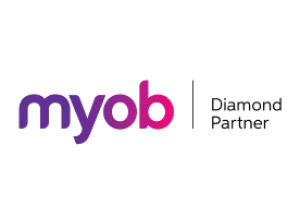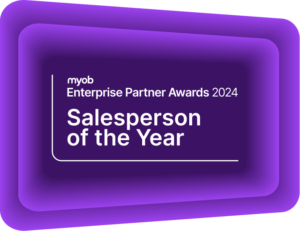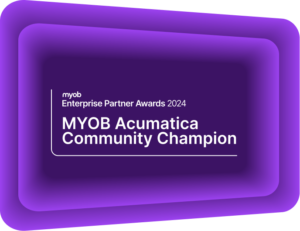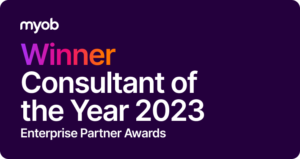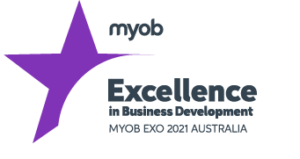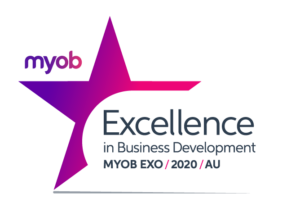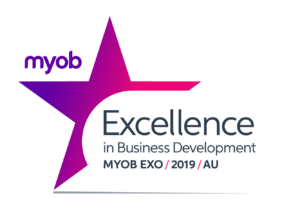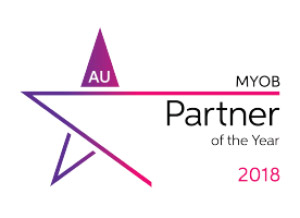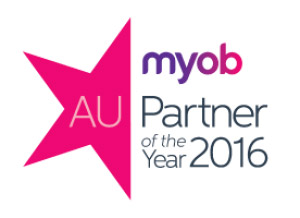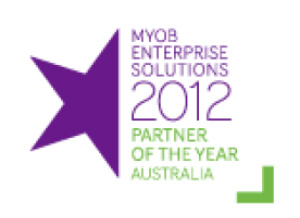The Cost of Rectification and Completion
Understanding the benefit of getting it right the first time, and the true cost of software implementation.Enterprise Resource Planning (ERP) systems are sophisticated business management platforms that you can use to improve data visibility, analyse key performance indicators (KPIs) and improve efficiency. However, due to their sophistication, an ERP requires an implementation project to ensure it is properly customised to meet your specific requirements. Like any complex project, we believe it is far better to get it right the first time. The cost rectification and completion for an implementation project attempted by a lesser partner far outweighs the cost offered by a premium implementer.
A true story from our CEO
In a faraway land and a long time ago, I was involved in the construction of a school. The project was partially funded by the Government and partly by the community through work-in-lieu. The government grant specified that local contractors had to be used.
After about 2 years, the result was a wonderful school building for children who had no previous access to secondary schooling. On the surface, everything looked rosy.
And then the problems became apparent. Retrospective investigation revealed that the builder, using local labourers, dug the foundations and called for the architect to sign off before concrete was poured. All was to spec. Having got the go-ahead to pour the concrete foundations, the builder filled the foundations with site rubble, and instead of pouring a 500mm thick concrete foundation, he poured a 50mm thick foundation. Who would know?
Building commenced. Local bricklayers toiled away. Unbeknownst to “management”, the builder was mixing his mortar in a ratio of 1 part cement to 10 parts sand. That is half as much cement as was specified. He then sold the remainder of the cement for the benefit of his own account.
And the site levels were wrong. The school bathrooms had been built at a lower level than the on-site wastewater tank. The drain water and sewage from the bathrooms refused to flow uphill. The bathrooms were unusable.
Through a lack of experience, lack of skills and sometimes pure incompetence, what could have been a showcase school turned into a white elephant. A consulting engineer was called in by the Government.
His report was titled “Rectification and Completion of the School Project”.
The cost to rectify? About 2 times the original cost of building the school.
Had it been the roof, or the courtyard, or the windows that were the problem, it would have been feasible to rectify. But the foundations and the load-bearing walls, and the levels were the problem.
And this brings me to my own experiences with software implementation. You have to get the fundamentals right.

Zikhethele Secondary School in Devon, South Africa, built in [1994/5], has approximately 1,181 students enrolled.
Money and time spent on rectification and completion by far exceeds the cost of doing it right the first time.
Why do ERP Implementations fail?
The implementation and operation of ERP systems are known to be complex and costly installations that require knowledge and expertise from various areas and sources. The Standish Group’s CHAOS Report finds that only 16.2% of technology projects are completed on time and on budget, while over 31% are cancelled before completion. The growing number of horror stories about failed or out-of-control projects should certainly give managers cause for concern.
The Australian Department of Defence recently reported that their mammoth back-end technology upgrade (read ERP), which began in 2015, has slipped by 5 years and will now cost $3.5 billion, or around 3 times initial estimates.
Unfortunately, ERP Implementations sometimes fail. No different to the school: through a lack of experience, lack of skills and sometimes pure incompetence. They fail more often than you might think, and significantly more often than engineering projects like building a school. The common thread for failed projects is often an inadequate plan to mitigate the risks of implementation.

Software Implementation Risk Guide Brochure
Download nowTypes of Software Risk
Software risk is whether the new system will do what you need it to do and how well it can be customised for implementation.
Difficulty migrating data from current systems
Migrating historical data is notoriously difficult. The data in your source system is likely to be incomplete, corrupted, or out of balance. Your new system may require concatenation or de-concatenation. Data fields have to be mapped. Information required for your new system may be spread across multiple old systems.
To mitigate, choose an implementing partner experienced in data mapping and migration.
Frequent upgrades
With SaaS software, you will get used to more frequent upgrades than with an on-premise system. If you have integrations into other products, these upgrades pose a risk. Integration points can get disrupted. Ideally, you want the opportunity to test an upgrade in a sandbox environment before rolling it out to your live environment. Vendors of SaaS software would like to see as many clients as possible on the newest versions, so be prepared for constant and frequent changes.
Does not meet local requirements such as taxation laws and payroll requirements
Australian and New Zealand tax laws are quite specific. Your auditors or accountants are a valuable resource to assist when selecting software not widely used in your country. While most large solutions will be compliant with international accounting standards, it’s the local nuances that are problematic. Lodgement of Activity Statements, GST, Payroll Taxes and Leave liabilities are all difficult areas.
Choose software that is widely used in your country and make sure that Payroll is compliant and integrated.
Software Bugs
No software is entirely bug-free. The software vendor must have the resources to continually fix discovered bugs. Selecting software that is widely used (especially in your industry) is a way to mitigate against you being the one to discover the bugs.
Not performing as claimed
Be wary of “hunters” in the sales cycle who are only concerned with closing the deal and not with providing good service that improves your efficiency. Even a software vendor may make promises that are not substantiated in practice.
If it sounds too good to be true, it probably is.
Do comprehensive research on the software, check for Case Studies. Ask for a couple of reference sites from the Implementation Partner before committing.
Disappointing performance and stability
Moving from an on-premise system to a SaaS environment introduces many variables, such as the speed and stability of your internet connection and latency. The degradation of speed catches many new users unawares, as the expectation is that a SaaS system will perform as fast as on-premise. Your Sales Order entry clerk, who can type at 120 characters per minute, will have to pause and wait for the system to write back to the Cloud server. Even a one-second delay here feels like minutes. However, the inconvenience of the loss of speed will be offset by the benefit of the availability of information across the organisation in real time.
Requires investment in new IT infrastructure
Your new ERP system is one component in your hardware and software technology “stack”. It interacts with your other systems, such as your Windows operating system and Office 365. Sometimes, the systems do not talk nicely to each other. For example, old versions of Outlook cannot talk to new versions of ERP software. This means additional hidden costs to upgrade other components.
Identifying the cause of poor performance is like looking for a needle in a haystack. With SaaS, the hosting company takes responsibility for maintaining sufficient resources for your system. Sometimes it is you, sometimes it is them. The selection of your implementation partner is critical, as you really need someone who will not simply pass the buck.
Another major cause of performance issues is integration with third-party systems. Make sure you are not the first and only organisation using a pre-built integration. Be clear as to where the responsibility lies for integration.
Not user-friendly
Modern User Interfaces are designed to be user-friendly. This complaint is usually related to users’ resistance to change and a degree of unfamiliarity. Ensure extensive training and access to a “sandbox” environment so that users can get used to the new interface before go-live.
Overly complex for requirements
This is a common cause of disappointment when organisations are transitioning from out-of-the-box software. As businesses grow, they become more complex, and ERP systems are designed to manage that complexity. It is not ideal to be re-implementing a new ERP system every 3 years; your choice of ERP should support your needs for 10 years or more.
Organisations grow through identifiable stages and reach developmental milestones, just like children do. A business must select software appropriate to its stage of development. Small businesses do not have the same compliance and auditability requirements as larger ones.
Unfortunately, separation of responsibilities, compliance and auditability comes at a price – and that is a loss of the simplicity/usability they enjoyed in a system designed for smaller businesses.
Types of Implementer Risk
Implementer risk is whether your consultants have the skills required to fulfil the sales team’s promise and unlock the potential of the software.
Over-promising and under-delivering
Similar to the “not performing as claimed”, but this risk factor relates squarely to the implementation partner you choose. Experienced implementation partners will ensure that they do not make promises they cannot deliver.
A wise man once said, “Don’t promise a horse and deliver a donkey.”
- Low level of experience with the product
- Under-qualified or unreliable implementers
In this industry, you get what you pay for. An implementation budget that is far below others is probably an indication that the partner is missing something or making concessions to offset a lack of experience.
Lead or Key implementer(s) leaving mid-project
These risks are easily mitigated by carefully choosing your implementation partner. Smaller implementation partners with small teams may be able to undercut larger, lower-risk implementation partners. But these are the associated risks.
Asking your implementer the question about team retention or turnover rates is a good indicator. A simple Google search will often surface employee concerns about the implementation company.
Make sure you understand and build relationships with more than one person in the implementing company. A company that has a Team structure carries less risk than a one-man band.
Not qualified or not sufficiently qualified
Every ERP system is different. An implementer familiar with one system still needs to earn his or her stripes on a different system. The best protection against this risk is a larger, experienced implementation company with a large team that specialises in one type of ERP and learn from each other in a collaborative environment.
Technical implementers who lack the Business Analytical skills or knowledge of Best Practice in your industry will often adjust your organisation’s ways of working to fit the ERP software. This generally will not lead to a good outcome, as your organisation loses their competitive advantage and ends up doing things the same way as its competitors. Configuring software does have some negative consequences if not done skilfully. While “package adopters” may save the cost of analysis of Current and Future States, and the cost of expertise in their industry, this saving is false economy as it often results in scope creep, variations, and rectification.
Misunderstanding your requirements
One of Kilimanjaro Consulting’s Golden Rules is to “Seek first to Understand”. Implementers who are full of ideas of how you should be running your company, without first asking questions, are likely to configure the system in a way that does not suit your requirements. Every company is unique. Your success and growth are due to you building a competitive advantage. You should be careful not to lose this through a generic implementation.
Overly optimistic implementation schedules
This relates equally to the implementation partner and to the client. If you have not previously been involved in an ERP implementation, you will not be able to imagine how much effort and time are required by your own team. Our experience tells us that most delays are on the client side. Waiting for a client to sign off on a design document, or to test some functionality. Days drag into weeks. Weeks drag into months.
Like a good wine, a good ERP implementation takes time. For a mid-sized organisation, a benchmark is 3 to 6 months from project commencement. Larger projects could take up to 2 years. To mitigate, set realistic targets, and try to stick to them.
Short-term, sales-oriented focus/Overselling
Similar to the “hunter” above, seek out an implementation partner with a focus on the lifetime value of a happy client.
Poor implementation methodology
You must insist that your implementer has a methodology (a guiding framework) and follows it. An implementation framework is even more important when implementing in smaller companies, where the in-house skills to complement the implementer do not exist. For many companies, this will be the first time they have implemented a fully integrated ERP.
Every implementation is different and client-specific, and while a methodology provides structure and guidelines and sequence, there is no formulaic approach. If you were to put two separate implementers to work on a site, their solutions would be different. There is, as they say, more than one way to skin a cat.
A good methodology starts with the implementer reaching a deep understanding of the client’s business.
Technically, there is a pre-implementation phase, where legal issues are dealt with, the project is planned, and the change is carefully managed with stakeholders and users in the business.
The ideal implementation methodology must then look at current practices in the business, with an eye to how these processes can be improved and efficiencies gained, utilising the new software. This is often called the” Current State”.
The next phase will be the actual implementation. Your team will start working with your implementation partner. You need to have a strong and competent Project Champion in your organisation to make this successful.
You will typically go through four phases:
- Design
- Build
- UAT (User Acceptance Testing / Training)
- Go-live (when you cut over to the new system).
Thereafter, your implementation partner will provide handholding, training, support and ongoing business process improvement services, generally not included in the Implementation estimate.
Insufficient benefits derived for the time, money and effort invested
This is usually the result of a poor software fit, or a poor implementation, or both. By being aware of the risks listed here, and taking care to mitigate them, this eventuality will be avoided.

Software Implementation Risk Guide Brochure
Download nowTypes of Self-inflicted Risk
Self-inflicted risk is your role in the implementation, and if your own team can devote the appropriate resources to the project. The ERP implementation is your own project, but you share part of the responsibility for managing implementation risk. Self-inflicted risk is a common syndrome with first-time ERP buyers. More “savvy” buyers, who have been through the implementation process before, tend not to repeat their same mistakes. This is likely to be one of the bigger investments your business makes, so it pays to make sure you have the appropriate resources dedicated to the project’s success.
Pay careful attention to:
- Unrealistic expectations in your team
- Matching budget to expectations. You may be better off postponing custom development to a “Phase 2”, when there is sufficient budget to “Do it right the first time.”
- No “champion” in the organisation to define requirements, manage changes, and drive the project,
- Project Champion or Sponsor leaving mid-project,
- Complex business process appears simple, through familiarity with the existing process,
- Skill levels of staff in your organisation,
- Insufficient investment in training.
Often, prospects see the ERP implementation as a silver bullet that will fix everything in a company. This is compounded by a vendor or implementation partner overselling, or by a salesperson keen to earn commissions, rather than managing the client’s expectations.
When the implementer says firmly: “No, it can’t do that”, accept that honesty as a gift, even though it is not what you want to hear.
It is our view that complex organisations cannot operate with “out-of-the-box” or “vanilla” ERP implementations. By their very nature and evolution, they require configuration or customisation. A pre-configured generic configuration will not have a successful outcome. “Dumbing it down” and using only a fraction of the functionality means you will forego the efficiency gains that were promised.
You must insist that your implementer identifies the immediate needs and takes your longer-term strategy into account.
How to Manage Implementation Risk
By being aware of the risks and taking control of what you can control, you can ensure that this does not happen to you. If there are early warning signs, speak up and get a second opinion sooner rather than later.
If your implementation is not going well, pull the plug early because rectification and completion is more expensive than doing it right the first time.
If you do not manage these risks well, you will eventually be confronted with that document: “Rectification and Completion of the ERP Implementation”
Research shows that up to 83% of companies that implemented ERPs within 2 years are intending to switch out. That points to a failure of the implementation.
Conversely, clients who have been settled for 5 years or more are massively unlikely to switch to new systems. Success!
“You may not have done this before, but we have. With an installed base of over 1500 clients, our proven methodology, broad experience and specialist team, we will help you climb the technology mountain”
What can management do to avoid a “Rectification and Completion” circumstance?
- The commitment, enthusiasm and encouragement of top management is key.
Not only to allocate resources, but to manage the change. Change is hard, and there will always be some resistance to a major shift such as this. Guide the implementation team to align with your organisational strategy. People must understand why you are making the change. No Pain, No Gain.
- Careful selection of your implementation partner is key.
Embed their consultant(s) within the project team, ensuring that they are working effectively alongside internal resources.
- Bear in mind the risk factors highlighted above.
When selecting a consultancy to implement your selected software, Verville and Halingten suggest that the evaluation criteria include:
- Experience
- Reputation,
- Financial strength,
- Technical capabilities, and
- Corporate vision and direction.
Not all implementers are equal, even though they are implementing the same software. In many cases, the Vendor’s Channel Partners are better equipped to implement than the Vendor themselves.
The ongoing relationship with the consultant is critical to the implementation’s success.
Engaged consultants should form an integral part of the project team to guide and influence the implementation process, working alongside internal team members. This relationship needs transparency as an organisation finds a suitable level of dependency, ensuring that consultants are empowered while providing appropriate levels of knowledge transfer from the consultancy to the organisation[1] [2]
Next Steps
If you are partway through a treacherous implementation or just about to start your technology journey, our team can help you safely navigate the process. Our team specialises in implementations for larger, more complex organisations and follows a structured methodology to minimise implementation risk.
The Kilimanjaro Consulting team build long-lasting partnerships with our clients. We are farmers, not hunters, and look to nurture our clients over their lifetime. To start a conversation about MYOB Acumatica (formerly MYOB Advanced) and explore how it can improve efficiency in your organisation, email sales@kilimanjaro-consulting.com or call 1300 857 464 (AU) or 0080 436 774 (NZ).
[1] S. Finney and M. Corbett, “ERP implementation: a compilation and
analysis of critical success factors,” Business process management
journal, 2007.
[2] A. Al-Mudimigh, M. Zairi, and M. Al-Mashari, “ERP software
Implementation: an integrative framework,” European Journal of
Information Systems, vol. 10, no. 4, pp. 216-226, 2001.

